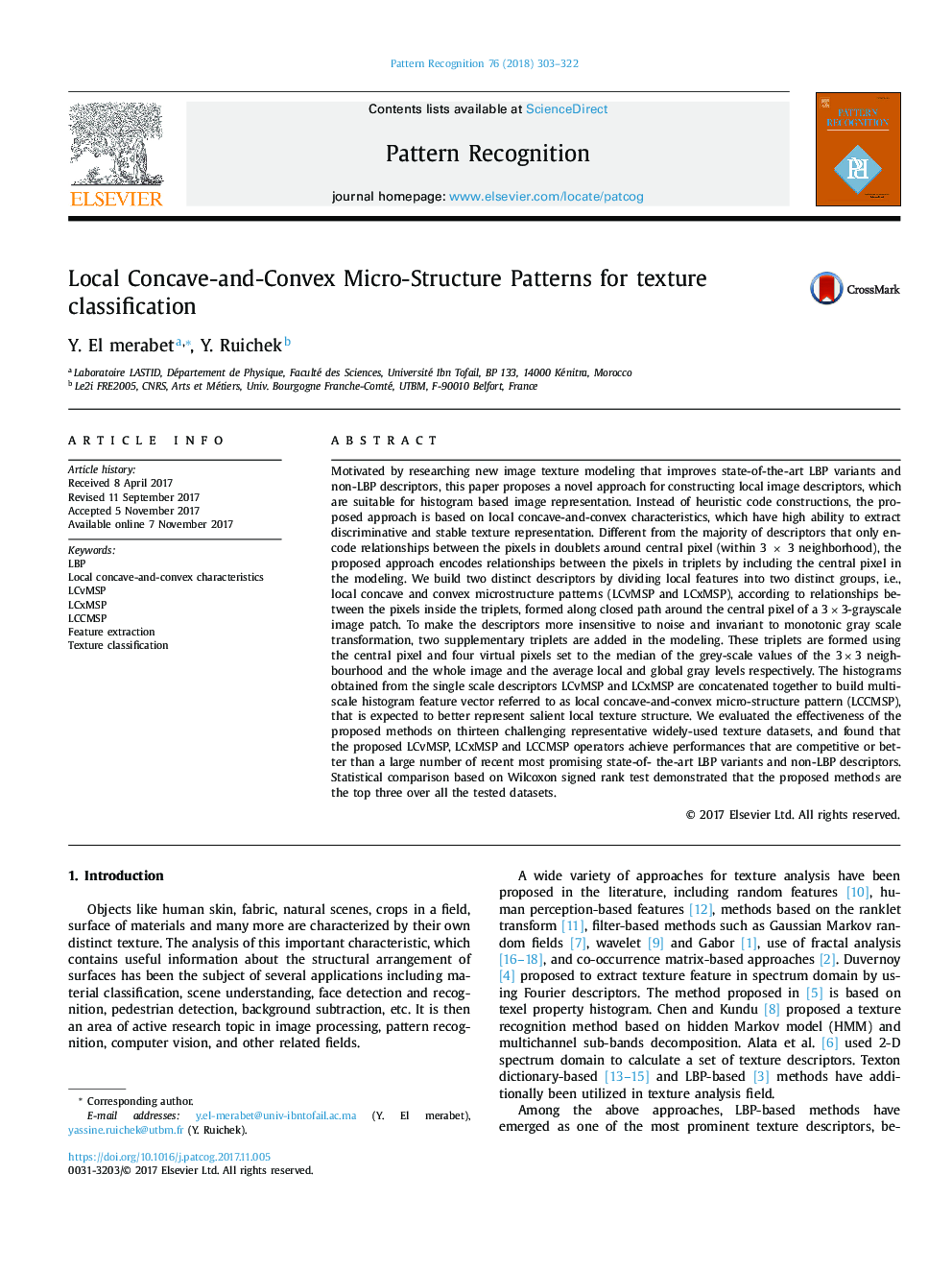| Article ID | Journal | Published Year | Pages | File Type |
|---|---|---|---|---|
| 6939422 | Pattern Recognition | 2018 | 20 Pages |
Abstract
Motivated by researching new image texture modeling that improves state-of-the-art LBP variants and non-LBP descriptors, this paper proposes a novel approach for constructing local image descriptors, which are suitable for histogram based image representation. Instead of heuristic code constructions, the proposed approach is based on local concave-and-convex characteristics, which have high ability to extract discriminative and stable texture representation. Different from the majority of descriptors that only encode relationships between the pixels in doublets around central pixel (within 3 â¯Ãâ¯Â 3 neighborhood), the proposed approach encodes relationships between the pixels in triplets by including the central pixel in the modeling. We build two distinct descriptors by dividing local features into two distinct groups, i.e., local concave and convex microstructure patterns (LCvMSP and LCxMSP), according to relationships between the pixels inside the triplets, formed along closed path around the central pixel of a 3â¯Ãâ¯3-grayscale image patch. To make the descriptors more insensitive to noise and invariant to monotonic gray scale transformation, two supplementary triplets are added in the modeling. These triplets are formed using the central pixel and four virtual pixels set to the median of the grey-scale values of the 3â¯Ãâ¯3 neighbourhood and the whole image and the average local and global gray levels respectively. The histograms obtained from the single scale descriptors LCvMSP and LCxMSP are concatenated together to build multi-scale histogram feature vector referred to as local concave-and-convex micro-structure pattern (LCCMSP), that is expected to better represent salient local texture structure. We evaluated the effectiveness of the proposed methods on thirteen challenging representative widely-used texture datasets, and found that the proposed LCvMSP, LCxMSP and LCCMSP operators achieve performances that are competitive or better than a large number of recent most promising state-of- the-art LBP variants and non-LBP descriptors. Statistical comparison based on Wilcoxon signed rank test demonstrated that the proposed methods are the top three over all the tested datasets.
Related Topics
Physical Sciences and Engineering
Computer Science
Computer Vision and Pattern Recognition
Authors
Y. El merabet, Y. Ruichek,
